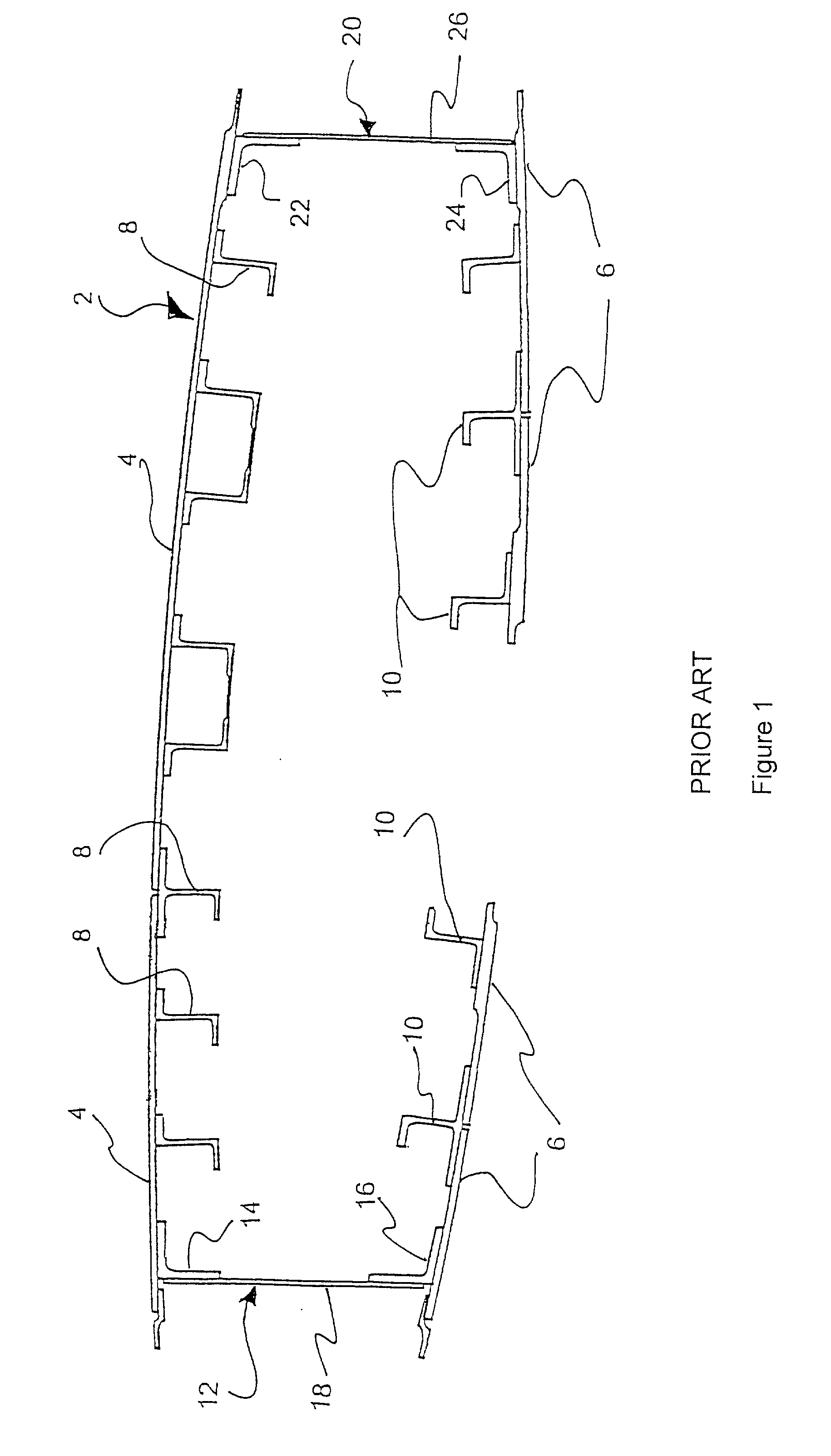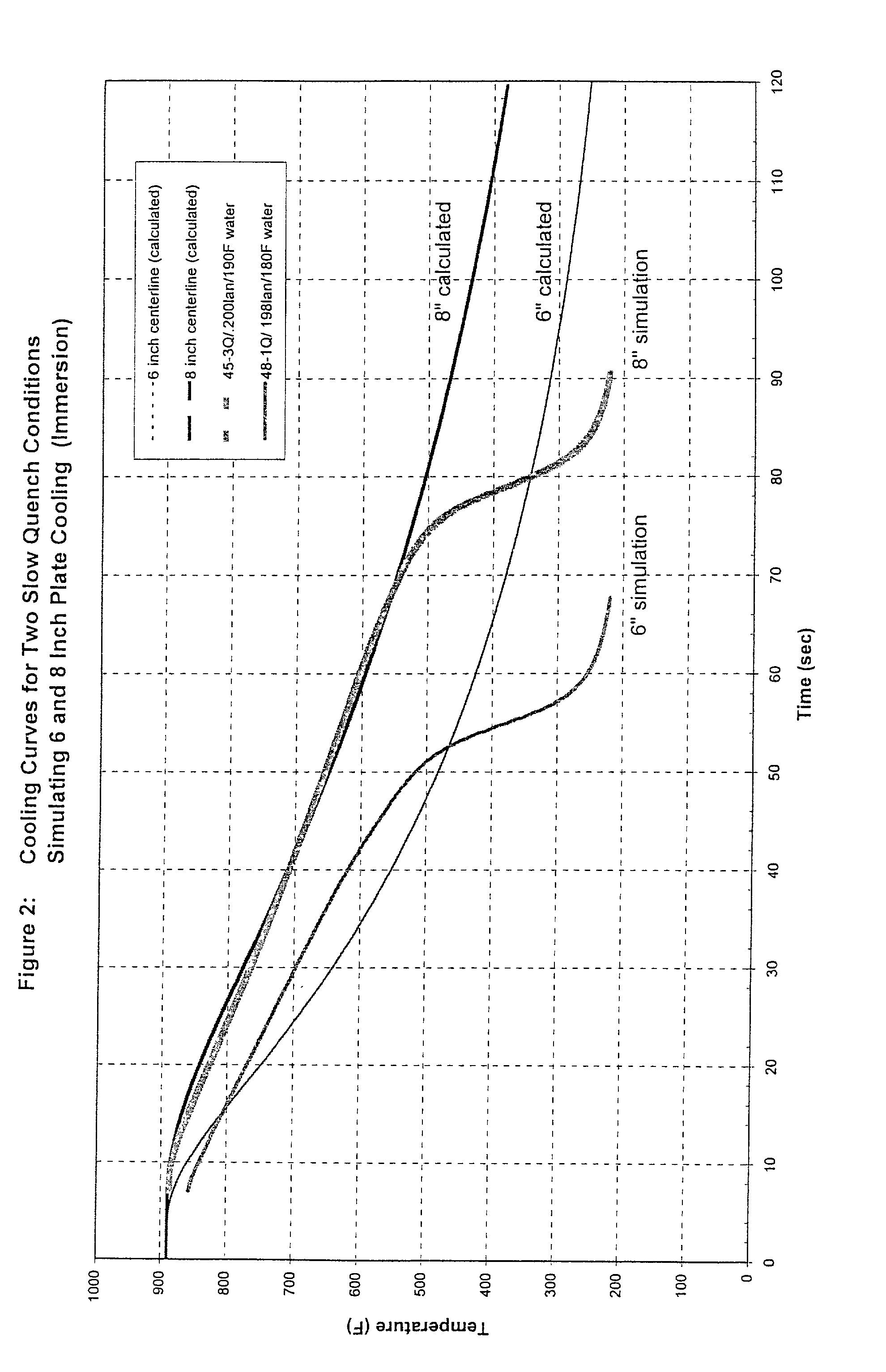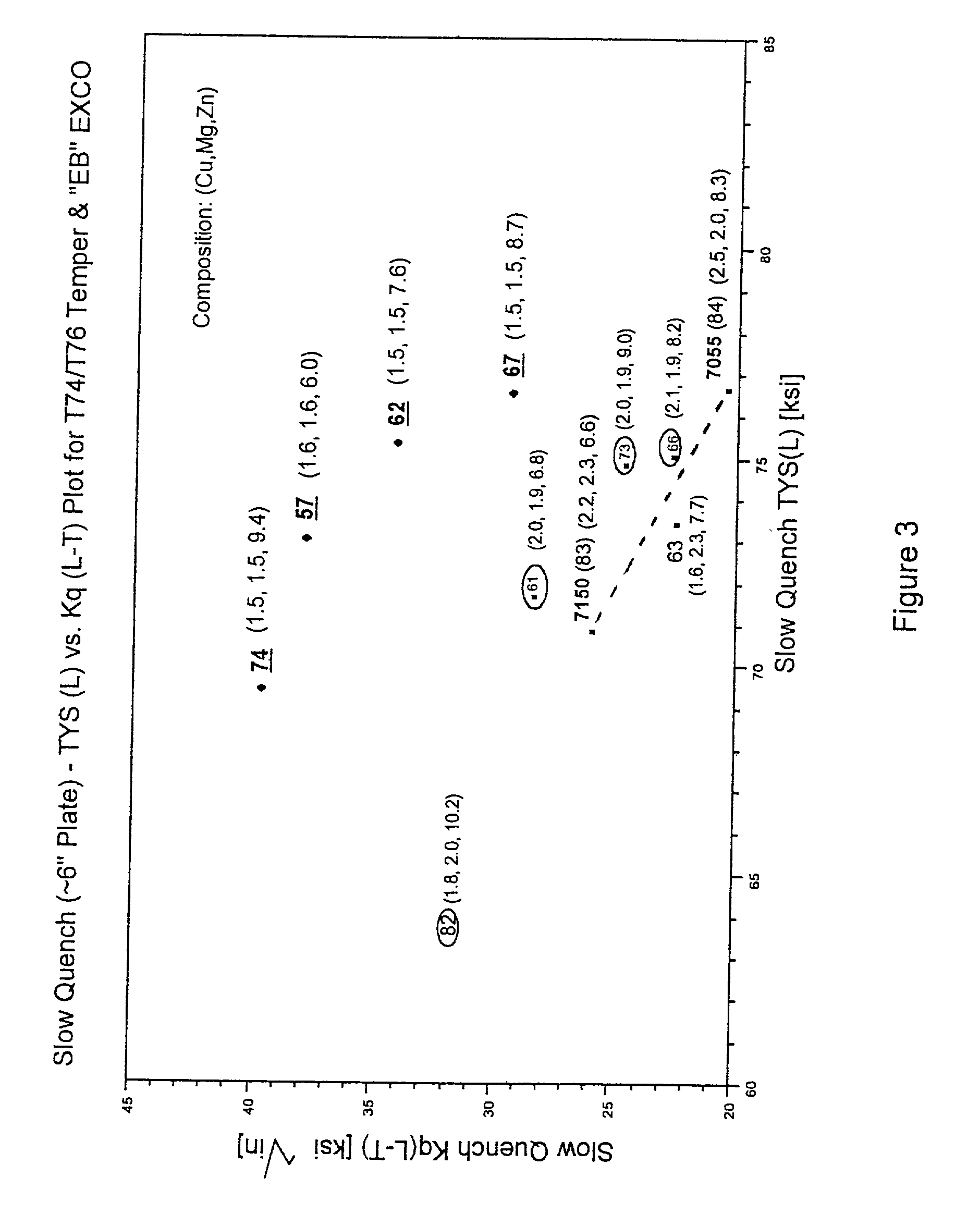Aluminum alloy having superior strength-toughness combinations in thick gauges
a technology of alloys and thick gauges, applied in the field of aluminum alloys, can solve the problems of increasing the overall weight penalty, not meeting the desired property requirements of alloys, and adding undesirable weight to aircra
- Summary
- Abstract
- Description
- Claims
- Application Information
AI Technical Summary
Problems solved by technology
Method used
Image
Examples
example 2
[0064] Die forging evaluation of the alloy of the present invention was performed in a plant-trial using two full-size production sheet ingots, designated C8XA-1 and C8XA-2, with the following compositions: Ingot C8XA-1: 7.35 Zn, 1.46 Mg, 1.64 Cu, 0.038 Fe, 0.022 Si and 0.11 Zr; Ingot C8XA-2: 7.39 Zn, 1.48 Mg, 1.91 Cu, 0.036 Fe, 0.024 Si and 0.11 Zr. A standard 7050 ingot was also run as a control. The ingots were homogenized at 885.degree. F. for 24 hours and sawed to billets for forging. A closed die forged part was produced for evaluation of properties at three different thicknesses, namely, 2 inch, 3 inch and 7 inch thicknesses. The fabrication steps involved two pre-forming operations utilizing hand forging. This was followed by a blocker die operation and a final finish die operation both carried out in a 35,000 ton press. Forging temperatures used were about 725.degree. to 750.degree. F. The forged pieces were solution heat treated at 880.degree. to 890.de...
PUM
| Property | Measurement | Unit |
|---|---|---|
| thickness | aaaaa | aaaaa |
| tensile yield strength | aaaaa | aaaaa |
| tensile yield strength | aaaaa | aaaaa |
Abstract
Description
Claims
Application Information
 Login to View More
Login to View More - R&D
- Intellectual Property
- Life Sciences
- Materials
- Tech Scout
- Unparalleled Data Quality
- Higher Quality Content
- 60% Fewer Hallucinations
Browse by: Latest US Patents, China's latest patents, Technical Efficacy Thesaurus, Application Domain, Technology Topic, Popular Technical Reports.
© 2025 PatSnap. All rights reserved.Legal|Privacy policy|Modern Slavery Act Transparency Statement|Sitemap|About US| Contact US: help@patsnap.com



